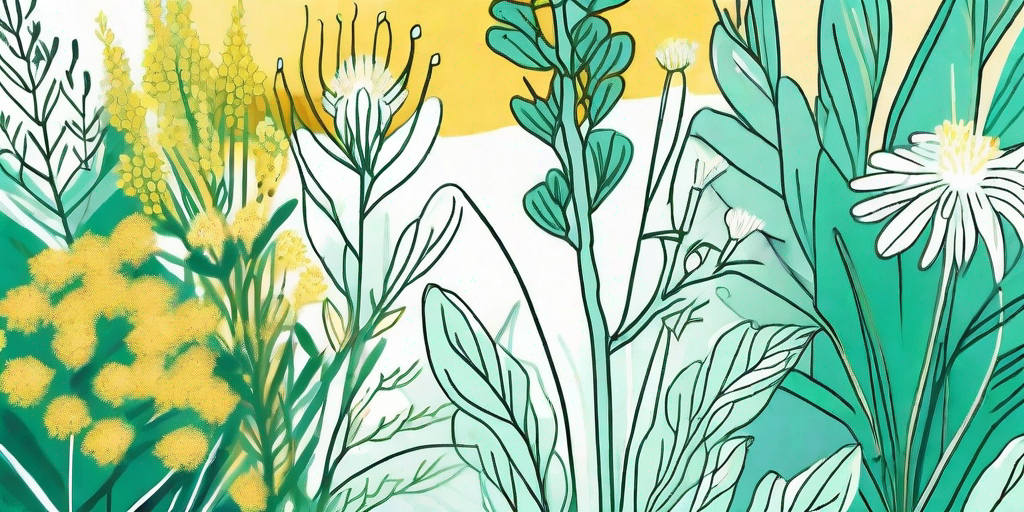
Ah, the vibrant garden. A sight to behold and a joy to cultivate. But how does one achieve such a feat? Is it magic? Is it luck? No, dear reader, it's a little something called knowledge and hard work. But don't worry, we're here to spill the beans, or should we say, the seeds.
The Magic of Goldenrod
Goldenrod, or Solidago if you want to get all scientific about it, is a genus of about 100 to 120 species of flowering plants. They're native to North America, including Mexico; South America; and Eurasia. So, if you're reading this from Mars, sorry, this might not apply to you.
But why goldenrod, you ask? Well, aside from its vibrant yellow color that can brighten up any garden, it's also a hardy plant that's resistant to many pests and diseases. Plus, it's a great source of nectar for bees and butterflies. So, if you're a fan of these buzzing creatures, goldenrod is a must-have in your garden.
Choosing the Right Goldenrod
With over a hundred species of goldenrod, choosing the right one for your garden can be a bit overwhelming. But don't fret, we've got you covered. Here are a few factors to consider when choosing your goldenrod:
- Size: Goldenrod plants can range from 1 to 6 feet in height. So, consider how much space you have in your garden and how tall you want your plants to be.
- Soil: Most goldenrod species prefer well-drained soil, but some can tolerate clay or sandy soil. So, know your soil type before making a choice.
- Sunlight: Goldenrod plants love the sun. So, if your garden is in a shady area, you might want to reconsider or find a species that can tolerate partial shade.
Planting Your Goldenrod
Now that you've chosen your goldenrod, it's time to get your hands dirty. But before you start digging, here are a few things you need to know:
First, goldenrod plants are best planted in the spring or fall. They prefer full sun, but can tolerate partial shade. As for the soil, it should be well-drained. If your soil is heavy clay, you might want to amend it with some organic matter to improve its drainage.
When planting, dig a hole that's twice as wide and the same depth as the root ball of your goldenrod plant. Place the plant in the hole, making sure the top of the root ball is level with the soil surface. Backfill the hole with soil, firming it gently around the plant. Water thoroughly, and voila, you've just planted your goldenrod.
Maintaining Your Goldenrod
Goldenrod plants are pretty low-maintenance. They don't require much watering, except during dry spells. And they don't need much fertilizing, either. In fact, too much fertilizer can lead to leggy growth and fewer flowers. So, go easy on the feed.
As for pruning, you can cut back your goldenrod plants in the fall after they've finished blooming. This will help keep them tidy and prevent self-seeding, which can lead to a goldenrod takeover in your garden. And trust us, as much as we love goldenrod, too much of a good thing can be, well, too much.
FAQs
Is goldenrod invasive?
Goldenrod has a reputation for being invasive, but this is a bit of a misunderstanding. While it's true that some species can spread aggressively by rhizomes, many others are well-behaved garden plants. So, do your research before planting and choose a species that's suitable for your garden.
Is goldenrod safe for pets?
Yes, goldenrod is generally safe for pets. However, like any plant, it can cause a reaction in some animals, especially if they eat a large amount. So, it's always a good idea to keep an eye on your furry friends in the garden.
Does goldenrod have medicinal uses?
Yes, goldenrod has been used in traditional medicine for various ailments, including kidney stones, urinary tract infections, and arthritis. However, it's always best to consult with a healthcare professional before using any plant for medicinal purposes.
Conclusion
And there you have it, the secret to a vibrant garden: goldenrod. With its bright yellow flowers, hardy nature, and bee-friendly nectar, it's a great addition to any garden. So, why not give it a try? Your garden (and the bees) will thank you.
Remember, gardening is not just about the destination, it's also about the journey. So, enjoy the process, learn from your mistakes, and don't forget to stop and smell the goldenrod.















